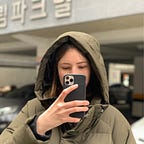Memory: The Misinformation Comic
“Design an experience that externalises the nature of memory”
Group members 🤝: Maria Shuttleworth, Sylvester Liu, Max Hain, Rikkie Xiong
<<< Previous post on Memory here: Memory: Brainstorming
Following our experiments from last week, we spent this week lingering on one main question: “Can we get someone to remember something wrong?”
Our storytelling research told us that this was possible, so we began to think about how we could make this happen.
One idea was to try to recreate a form of storytelling, but live: have a volunteer recall a memory (something from childhood e.g. when you got your favourite birthday present), and then tell us about it. We would then try to probe and ask misleading questions, hopefully leading them to including some misinformation in their re-telling.
We liked this idea but felt it could be developed — having it explore a different form of self-expression that’s not just words. John, in our Tuesday tutorial, suggested that we make the volunteer draw out their memory. We used this and eventually ended up with the idea of a comic strip, having a volunteer fill this out based on pre-included information, allowing them to draw out the sequence of events and not just one static scene.
Some thought and a few zoom calls later, we decided to have the focus of the comic strips be a film — one that everyone has seen — rather than a personal memory.
We made a poll with 13 films from a “Top 50 films” list, and sent it out asking our classmates to select ones they’ve seen, and to also write a little bit on what they thought of the film — We wanted to find out which films people had the biggest emotional connection to, as this would help them to remember it better.
Our results told us that Harry Potter was amongst one of the most watched films (alongside Avatar and the Matrix), however we selected Harry Potter as people tended to note that they link a lot of emotion to that movie, saying that it reminds them of their childhood.
Getting to work.
Ironic that the first piece of work I had to do was to sit back, relax, and watch the film, but you wont find me complaining. As I watched I sketched out scenes I thought would be memorable enough for the exercise to work, but not so forgettable that no one would remember them at all.
We settled on the scene where Harry meets Ron and Hermoine for the first time on the Hogwarts Express, splitting the scene up into three digestible parts.
Now for the fun part. We started weaving in bits of misinformation. For example, in each comic strip we left the first and last scene unchanged, but made sure to also sneak in something from a separate scene, or even from a different Harry Potter film entirely.
To make it even harder, we also prepared a pack of “props” consisting of pre-filled speech bubbles, items and characters from the film (e.g. Hedwig, a chocolate frog, a Nimbus 2000 broomstick…) — these, however, were not all in the scene. The point here was to see how many people would be tricked by our misleading prompts, potentially misremembering it just because we added it into the pack of suggestions.
Presentation day.
We handed out the the comic strips and packs of props, and gave everyone 5 minutes to quickly fill in their pages.
The Results.
No one noticed our misinformation, instead they mostly just went with the flow which was a big win for us! People might have started off a little confused but as they dove into the exercise they figured out their own storyline based on what they remember from the film, what they talked about with their team, and the props we handed out to them.
Our theory was that we had changed their memories of those scenes by our deliberately placed misinformation, which was mostly confirmed by chatting to the participants afterwards: one person said that she was disappointed with herself for not noticing as she was a huge Harry Potter fan! However another team mentioned that half of their table hadn’t seen the film, meaning they couldn’t participate as planned and this meant their page was less convincing for our testing. If we were to do this again, we should keep in mind making sure everyone has watched the film to ensure the best results.
Next project on Soil in my next post: Soil: The exploration phase. >>>
References.
- Schmolck, H., Buffalo, E. A. and Squire, L. R. (2000) ‘Memory Distortions Develop Over Time: Recollections of the O.J. Simpson Trial Verdict After 15 and 32 Months’, Psychological Science, 11(1), pp. 39–45. doi: 10.1111/1467–9280.00212.
- Shane, M. and Peterson, J. (2004) “Self‐induced memory distortions and the allocation of processing resources at encoding and retrieval”, Cognition & Emotion, 18(4), pp. 533–558. doi: 10.1080/02699930341000437.
- Suddendorf, T. and Corballis, M. C. (2007) “The evolution of foresight: What is mental time travel, and is it unique to humans?,” Behavioral and Brain Sciences. Cambridge University Press, 30(3), pp. 299–313. doi: 10.1017/S0140525X07001975.
